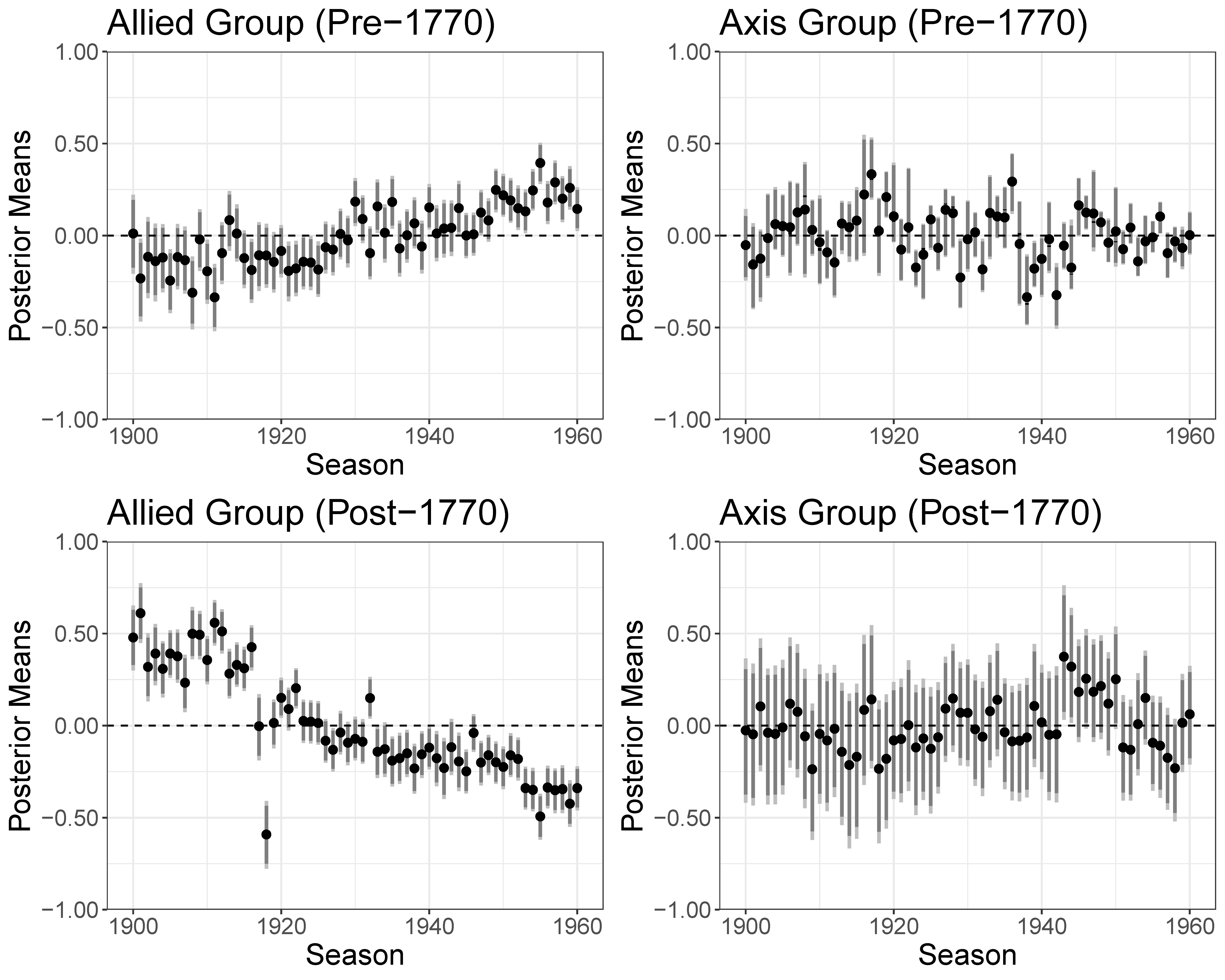
The committee, consisting of Anita Gohdes (Hertie School), Nils W Metternich (University College London), and Yuri Zhukov (Georgetown University), has awarded the 2024 JPR Best Visualization Award to Masanori Kikuchi (Washington University in St. Louis). The prize-winning publication is a research article titled ’How does war affect cultural tolerance? Evidence from concert programs, 1900-60’ and was published in the Journal of Peace Research 61(2): 163–179.
The study analyzes concert programs from 10 major symphony orchestras across five countries between 1900 and 1960, revealing that wartime significantly reduces performances of enemy nations' modern music, with post-defeat recovery differing between victorious and defeated nations. The visualizations in the article exemplify the compelling use of grayscale plots characterized by simplicity, readability, and clarity. Graphs are used both for descriptive purposes (e.g. Figure 1) and for effectively summarizing results (e.g. Figure 5) through their careful use of labels and captions, making them self-sufficient figures. The article pays particular attention to the aspect ratios of graphs, which are well-proportioned, making the plots easier to interpret and visually balanced. Figure 6 serves as an excellent example, showing how cultural tolerance developed differently in victorious and defeated countries after WWI and WWII. Despite the complexity and volume of information, the figure's clear captions and labels, compelling use of shading, and instinctive sense of graphic design effectively communicate the article's core findings. The committee found that the use of excellent visualizations throughout the article demonstrates the state of the art in our discipline, and therefore, Masanori Kikuchi is a deserving winner of this year's JPR Best Visualization Award.
The award is worth USD 500. All articles published in Volume 61 of the Journal of Peace Research were eligible for the award.
Honorable mention goes to the runner-up: Melanie Sauter - 'Politicized health emergencies and violent resistance against healthcare responders' (JPR 61(4): 513-528).






